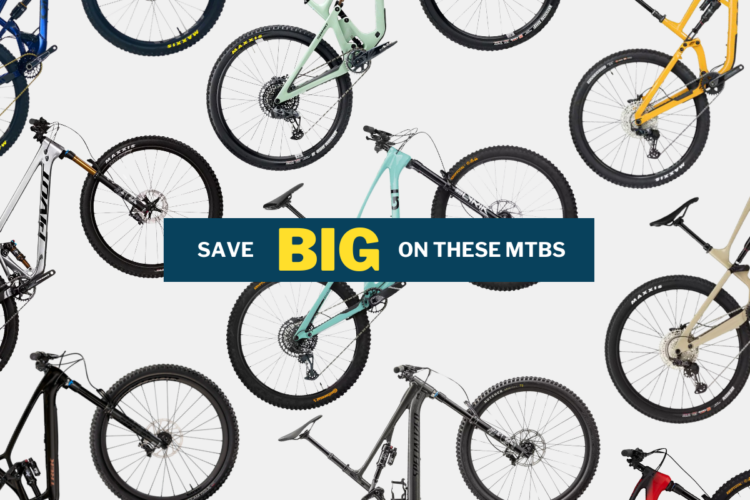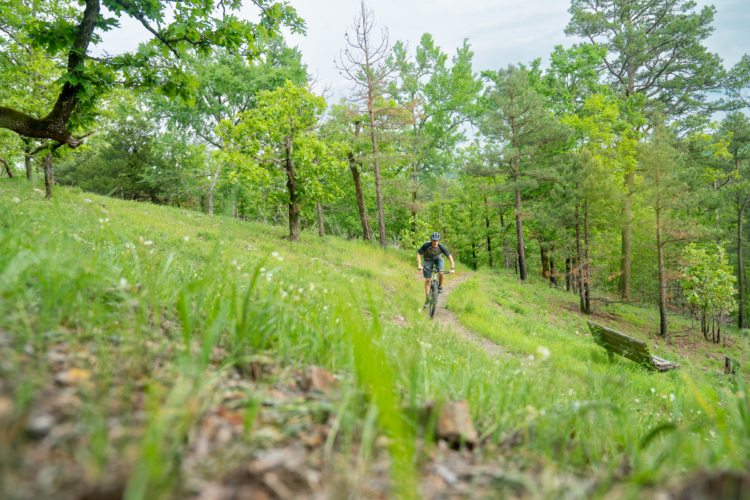
I am a firm believer in a “basics work best” approach to getting stronger. The simpler the exercise, the more effective it typically is.
Our bodies are meant to carry loads, hinge and squat to pick things up, push, pull, and resist rotational forces. All of these movements come into play when mountain biking too, like the way your body reacts when the trail undulates or when it goes off camber.
Mountain biking is a really simple thing. You sit in the saddle, you push a pedal down, and the bike moves forward. That is, until you throw in a switchback and send the rider into an anaerobic, emotional tailspin.
[see_also id=’215642′]
Batman’s arch nemesis was the Joker, Jerry had Newman, and mountain bikers have switchbacks. If they don’t spark joy for you, it has absolutely nothing to do with your mountain bike skills and everything to do with the letter X. Yes, the 24th letter of the alphabet can make or break your rides.
Here’s why. Successful switchback riding is incredibly dependent on how your right shoulder connects to your left hip diagonally through your core and vice versa. This is your X-pattern of movement, and it’s foundational to mountain biking.
This is important because there are only three things that go into a ride:
- Your brain gives the command for your leg to push a pedal down.
- The appropriate muscles move your bones.
- Your bike goes forward.
Mind-muscle connection
The mind-muscle connection directly affects your movement quality on AND off the bike, and it can be a raucous relationship when the connection goes awry. This is why tight hip flexors shut down the glutes, putting you at risk for both lower back and knee issues. If something is weak, something else tightens up.
Ultimately your nervous system won’t release muscular tension until imbalances improve. If, in spite of stretching and rolling out on an hourly basis, C3PO is more flexible than you are, that’s why.
Which brings us back to how this affects your rides. Think of your arms and legs as the spokes and your core and hips as your hub. If your spokes connect firmly at the hub, your wheel spins true. However, like the hoops on your bike, if one spoke needs tensioning, the wheel wobbles.

For instance, if you can’t turn your head to the left as well as you do the right, you just learned why cornering to the left is harder.
While cornering to the right, your left foot drives to the outside and your right hand pushes down on the bars. The same thing happens with the opposite hand and foot turning left. This is your body’s diagonal loading pattern in effect.
Standing to pedal uses the same movement patterns. You push your right foot down while your left hand pulls the bars across your body to the left and vice versa.
Opposites attract when it comes to the way our bodies move, and more importantly, how they break. Connecting diagonal dots will help you nail switchbacks and reduce your chances of sustaining an injury.
Switchback strength exercises
The following four exercises are specifically designed to activate the muscles used when you corner, ride out of the saddle, and tackle switchbacks. If you find one side of your body is stronger than the other, which is very common, it will explain any possible switchback or cornering challenges you have.
[see_also id=’255790′]
If you start working to correct these muscle imbalances, you will see an improvement in both the way you ride and your confidence in doing it.
Single leg wall push
This teaches your hips both how to produce force and to resist it from the left and the right. Think of a flow trail and the way you have to react to each turn.
Isometric lateral stick push
This takes the single leg wall push up a level because now you are directly involving the muscles used when riding. Your core, hip and arm muscles activate and allow you to “practice” riding without having to get on your bike. If you don’t have a stick, dowel rod, broom handle, etc, you can always push a hand directly into the wall in a split stance.
Half kneeling cable chop
This not only works your cycling specific power muscles, but you may even get a bit of a hip flexor or quad stretch. It can go a long way toward strengthening the mind-muscle connection, giving you a lot more control on your bike.
Crawling
This was your first mode of transportation and it formed your diagonal
movement patterns. Crawling also has the benefit of being both a moving plank
as well as a great way to blast your heart rate. If you’re still building your
movement foundation you can put your knees on the ground if they will
tolerate it.
There are very few outdoor activities that are as much fun as riding a bike while flying down tight, twisty singletrack. Getting your body stronger off the bike means you’ll have a lot more fun when you’re on it!











2 Comments
Feb 27, 2019
Feb 27, 2019